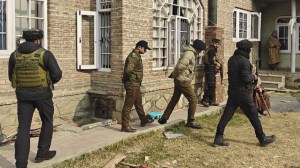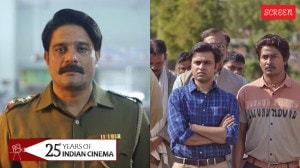From freedom struggle to service of lepers
Around the time India became independent, a young man of 37 was one of those very few freedom fighters who didn’t think their job was over.

Around the time India became independent, a young man of 37 was one of those very few freedom fighters who didn’t think their job was over. He had no time to bask in the glory of being a freedom fighter. He was in a hurry to undertake the next noblest possible activity in the service of his people. Three years later, he embarked on a mission to lay down a blueprint not only for a practical and a sustainable model of development but also a charter for how its citizens should, and can, become responsible partners in it. To achieve that, he chose the path that probably only he could have taken—service to leprosy patients.
Baba Amte’s indefatigable effort in the service of the poor and the ostracised can be understood in its proper perspective only when one visits Anandwan, Baba’s “forest of joy”. What started as a rehabilitation colony for leprosy patients and the disabled at Warora in the tribal district of Chandrapur in Maharashtra is today a pulsating model of development and self-reliance.
But Anandwan is not what Amte is all about. The 93-year-old life journey of Devidas Murlidhar Amte is replete not only with extraordinary humanitarian achievements but also with adventures that set him apart from most others of his ilk.
Born on December 26, 1914, at Hinganghat in Wardha district in a Brahmin zamindar family, Amte could have been a happy inheritor of 450 acres of ancestral land and kilos of gold. As a young man, he did wear the family riches on his sleeves by going to Nagpur’s upmarket Morris and Hislop Colleges in those days in his fancy sports car upholstered in tiger skin. His fascination for the wild cat made him rear leopards which he would chain and take for a walk along Nagpur’s streets. Fond of costly clothes, he would watch English movies and also write regular film reviews for The Picture Goer. An ardent fan of Norma Shearer, Amte developed pen-friendship with the Hollywood actress. Years later, Shearer was among the first to donate generously to Anandwan.
Amte’s zest for the best co-existed with his humanitarian instincts right since his childhood. He would often incur the wrath of his orthodox mother by mixing freely with Dalits. When he was 11, moved by the plight of a beggar, he gave him all the money meant for buying Diwali crackers. And at 14, he had disappeared from his home to live with Madia-Gond tribals of Chnadrapur district. In 1933, 19-year-old Amte worked as volunteer for the quake-affected at Quetta.
In 1936, Amte passed his Law degree examination and started practice at Durg.
Four years later, in 1940, Amte moved to Warora where his father wanted him to look after the family’s agriculture. It was here that he got a chance to engage with the working class and the disadvantaged, and soon, he was actively involved in many workers’ organisations. Around the same time, he had also started taking interest in Independence movement. Within two years, he joined the Quit India Movement and was jailed.
In the days when men would marry as young boys, Amte remained a resolute celebate with a hermit-like beard till he turned 32. But when he came in contact with Indu Ghule, daughter of Ghule Shastri, a Sanskrit scholar and family friend from Nagpur, he decided to break it and marry her. But just before the marriage date, he had an occasion to fight with thieves at Ghules’ house. He received knife injuries, but preferred to stand in marriage with bandages all over his body. Indu Ghule was to later become Sadhanatai for Anandwan’s inmates. She followed him like a shadow and worked in the colonies of sanitary workers and Dalits.
His efforts made him perhaps the most decorated person in India. Beginning with the highest Damien-Dutton international award for leprosy work in 1983 and a Padma Vibhushan, Amte was conferred with Magsaysay (1985), G D Birla International Award (1988), UN Human Rights Award (1988), Templeton (1990), International Giraff Award (1990), Right Livelihood Award (1992) and Gandhi Peace Prize (1999).





- 01
- 02
- 03
- 04
- 05


























